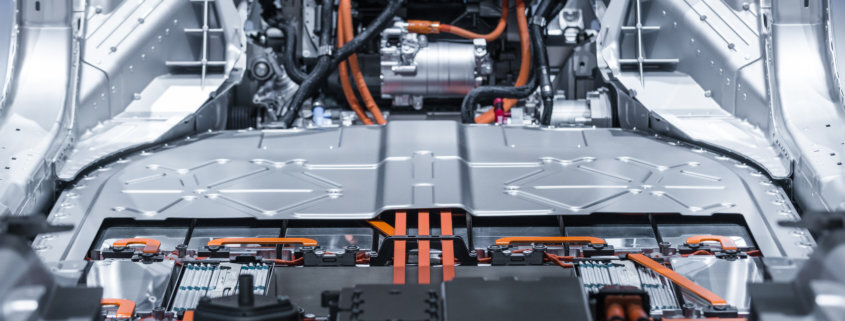Adhesives beneficial in electric vehicle battery bonding
Electric vehicle battery bonding – the choice between adhesives and mechanical fasteners
Gas-driven car and electric vehicle batteries traditionally have relied on mechanical fasteners. However, in some gas-drive batteries, adhesives are replacing the nuts and bolts. Although the batteries are different from each other, and not inter-replaceable, similar adhesives are applicable in electric vehicle battery bonding. The application of adhesives helps extend the haul between charges, which is necessary in vehicles that fully rely on batteries.
The unique construction of EV batteries
EV and hybrid batteries are far more complex than six-cell, thin-walled 12 volt batteries that enable starting a gas-driven engine. Here the battery gives a brief bolt of energy before fuel and spark ignited combustion take over. In electric vehicles all the energy needed for the vehicle must come from the battery.
EV batteries consist of series of multiple cells and thick walls. They have pack voltage of 100-200V in hybrids and 400-800V in electric vehicles. They also must have as large an energy capacity as possible to extend the distance between recharges to the maximum.
Adhesives for electric vehicle batteries win with light weight
The challenge the electric vehicle batteries are facing has two sides: the batteries must be as efficient as possible with a large energy capacity. On the other hand, at the same time the vehicles must be as lightweight as possible. This where replacing mechanical fasteners with adhesives can play an important role: they are more suitable for the assembly of the new type of batteries. Additionally adhesives for electric vehicle batteries are significantly lighter in weight than mechanical fasteners, and contribute to the weight reduction of the entire vehicle. Providing better gap control, adhesives also effectively bond dissimilar materials, which is a big pro in the vehicle industry.




Leave a Reply
Want to join the discussion?Feel free to contribute!